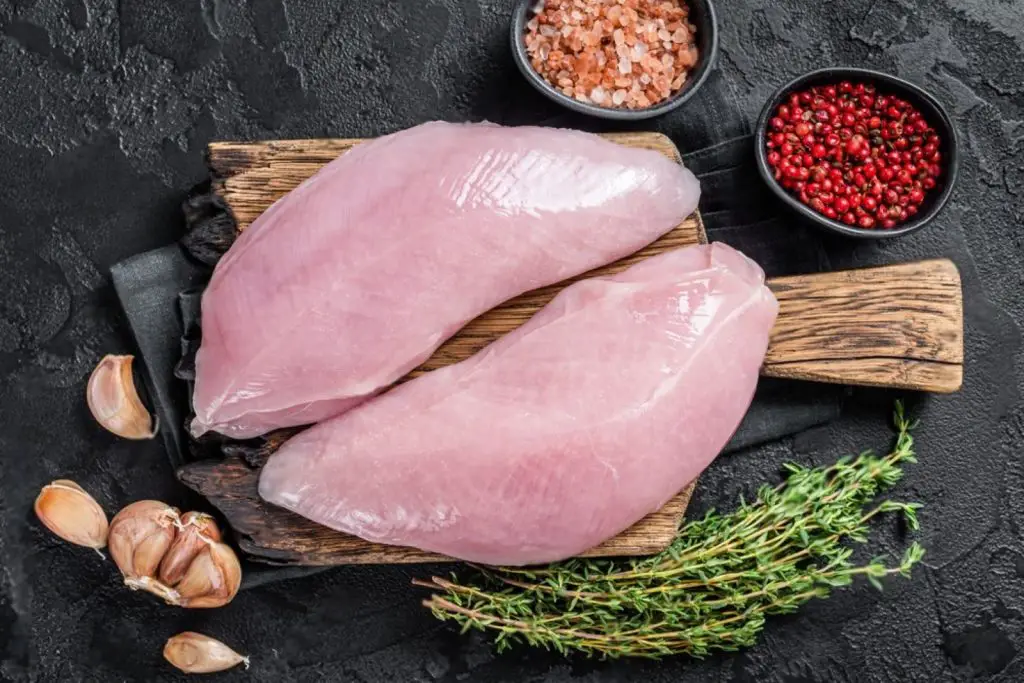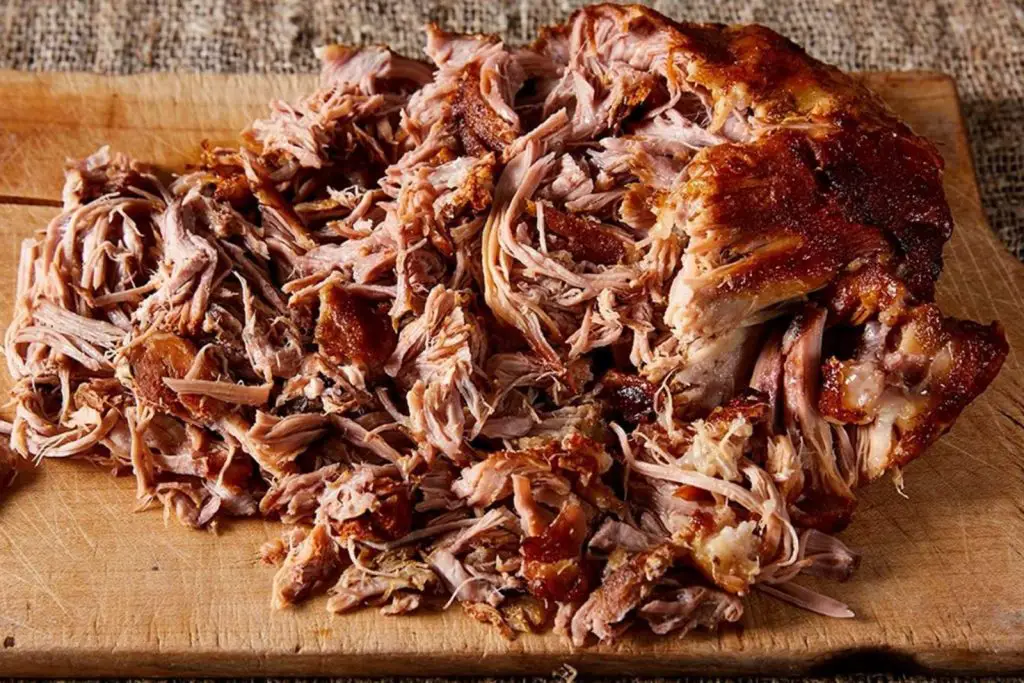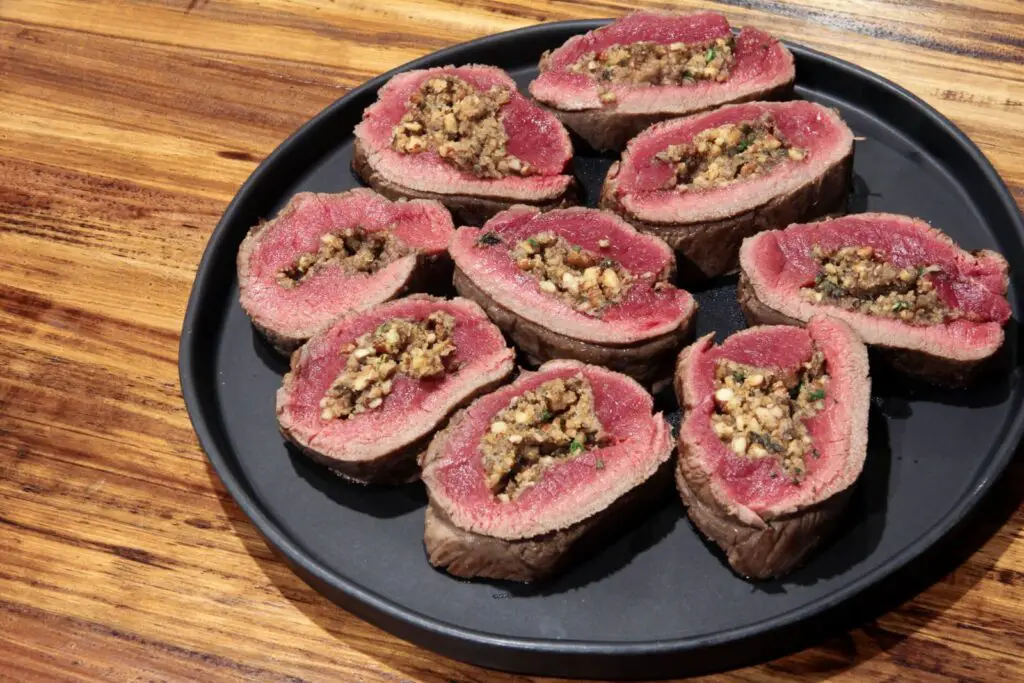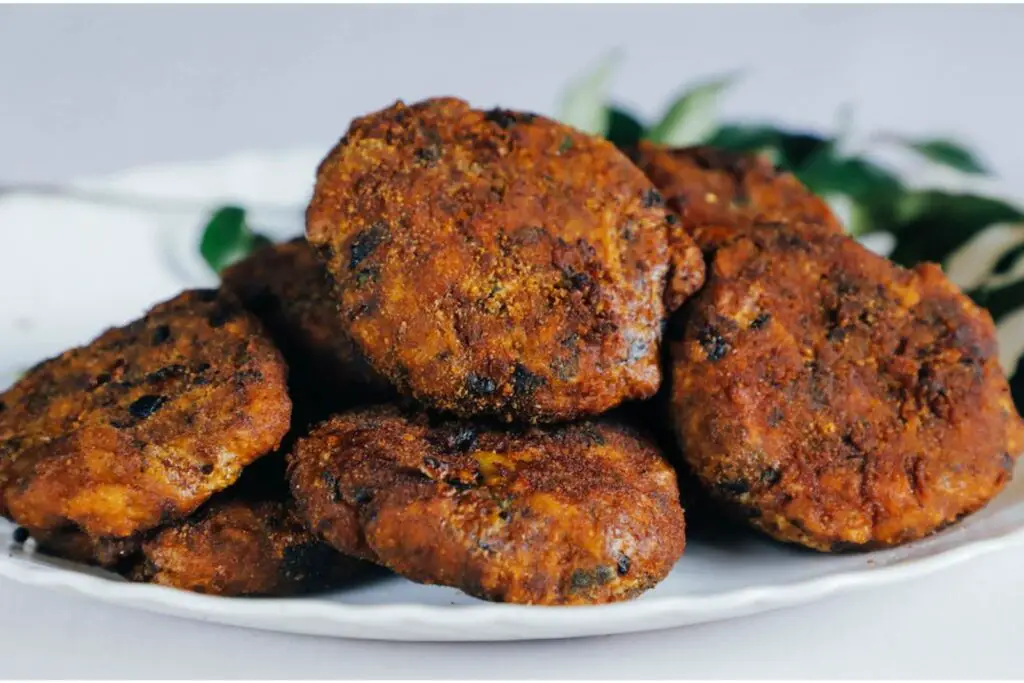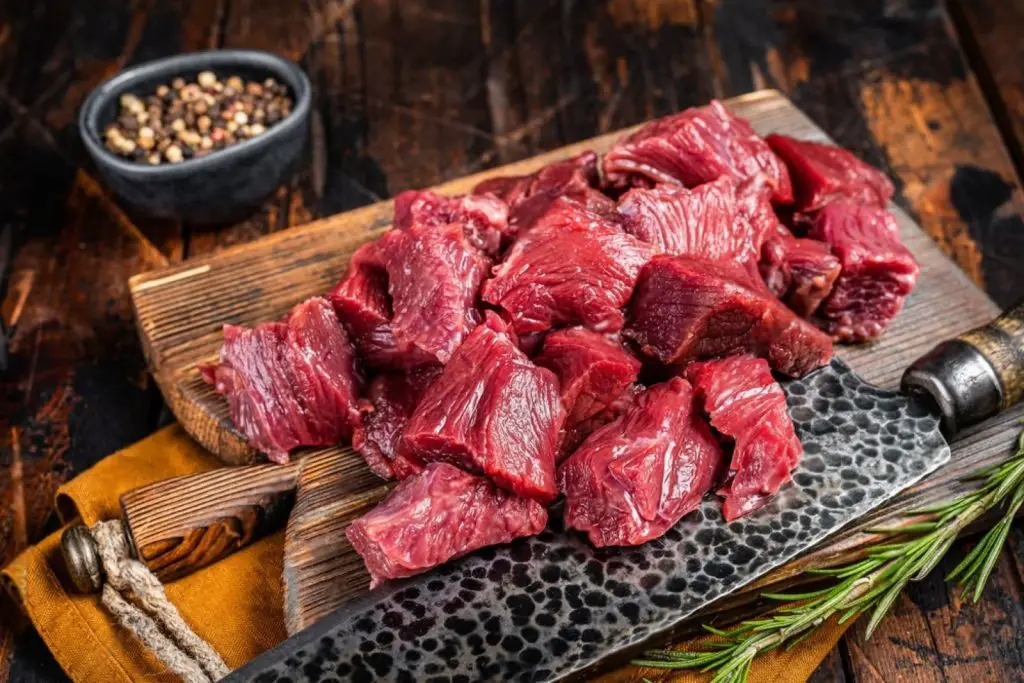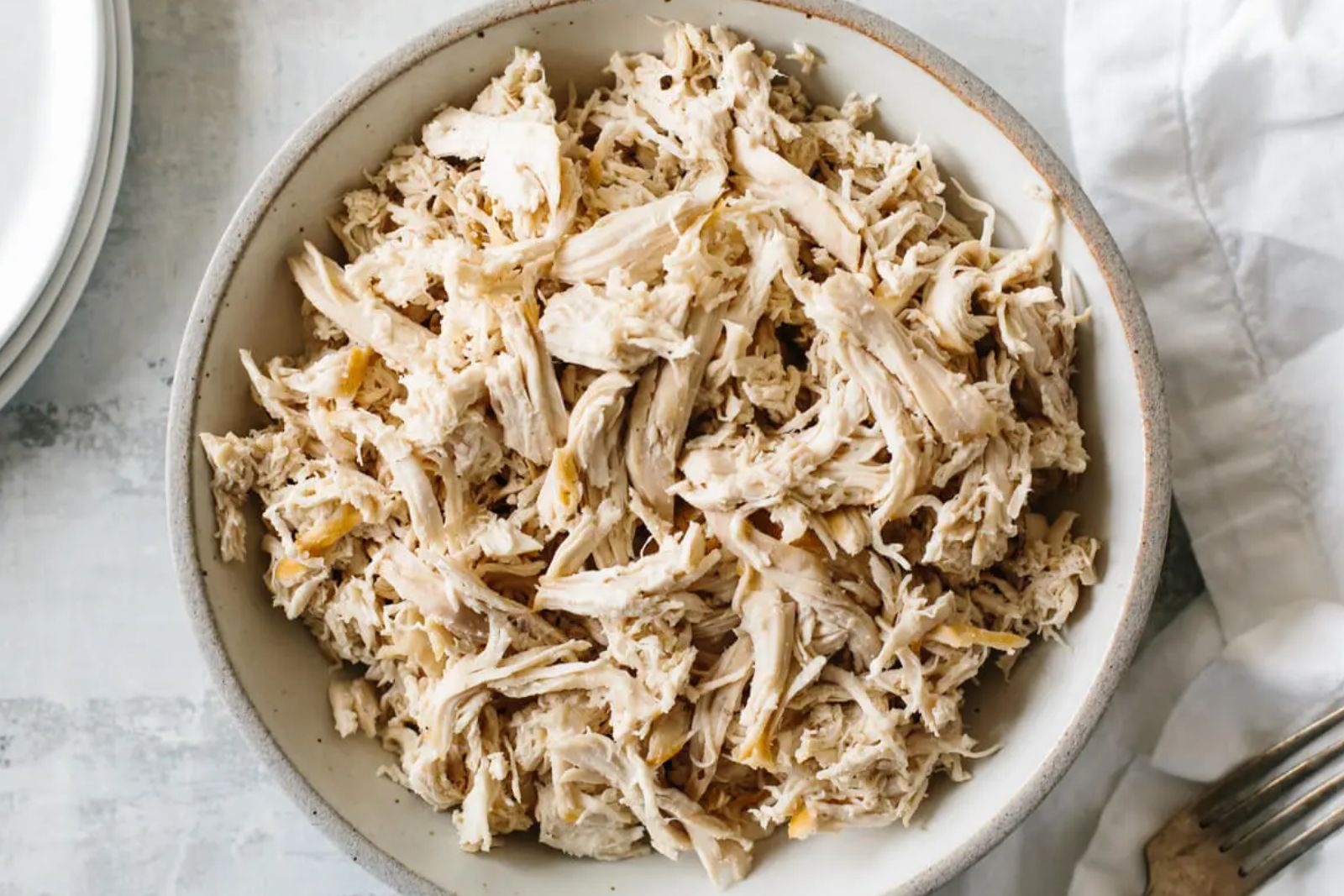
Pulled chicken is a versatile and flavorful dish made from tender, shredded chicken meat. It’s a popular choice for sandwiches, tacos, salads, and more. Whether you’ve cooked a large batch or want to preserve leftover pulled chicken, freezing is an excellent option to extend its shelf life while maintaining its delicious taste and texture. This article outlines a step-by-step guide on how to freeze pulled chicken properly, ensuring that it remains just as appetizing when you’re ready to enjoy it later.
Here’s a comprehensive guide on freezing pulled chicken:
Step 1: Prepare the Pulled Chicken
The first step in successfully freezing pulled chicken is to ensure that it’s properly cooked and seasoned. Pulled chicken is made from slow-cooking or simmering chicken until it becomes tender and easy to shred. This process not only enhances the flavor but also contributes to the overall texture of the dish.
To begin, select boneless, skinless chicken pieces such as breasts, thighs, or a combination of both. You can use leftover cooked chicken or cook the chicken specifically for making pulled chicken. Seasoning options are versatile and depend on your personal taste preferences. You might choose to marinate the chicken in a tangy BBQ sauce for a smoky flavor, coat it in a blend of aromatic herbs for added depth, or use a mix of spices to create a more complex taste profile.
The key to this step is ensuring that the chicken is fully cooked before proceeding to freeze it. Cooking the chicken thoroughly eliminates any potential bacteria or pathogens, making the pulled chicken safe for consumption even after freezing and reheating. The internal temperature of the chicken should reach at least 165°F (74°C) to guarantee its safety.
Taking the time to properly cook and season the pulled chicken ensures that you’ll have a flavorful and safe base to work with when you’re ready to enjoy your meals later on. This foundational step sets the stage for successful freezing and maintains the delicious taste and texture of the pulled chicken, providing a delightful culinary experience even after it’s been frozen.
Step 2: Allow the Chicken to Cool
After cooking the pulled chicken to perfection, the next crucial step is to allow it to cool down to room temperature before moving forward with the freezing process. This seemingly simple step plays a significant role in preserving the quality of the pulled chicken during its time in the freezer.
As the pulled chicken cooks, its internal temperature rises significantly. Placing hot or warm food directly into storage containers and then into the freezer can lead to the formation of condensation. Condensation occurs when the warm air inside the container comes into contact with the colder air in the freezer. This moisture can eventually freeze and turn into ice crystals on the surface of the food, a phenomenon known as freezer burn.
Freezer burn doesn’t necessarily render food unsafe to eat, but it can negatively impact its texture, flavor, and overall quality. The ice crystals that form can dehydrate the surface of the food, causing it to become dry and less appetizing. Additionally, the presence of ice can contribute to off-flavors and an unpleasant mouthfeel when the food is eventually thawed and reheated.
Allowing the pulled chicken to cool down to room temperature before freezing helps mitigate the risk of condensation forming inside the storage containers. This cooling process allows the excess steam and moisture to dissipate from the food, reducing the chances of ice crystals developing on its surface. As a result, the pulled chicken retains its original moisture content and overall quality, making it more enjoyable to consume once it’s thawed and reheated.
Step 3: Portion the Pulled Chicken
Dividing the freshly prepared pulled chicken into appropriately sized portions is a strategic step in the freezing process that not only enhances convenience but also helps in reducing unnecessary food waste. By portioning the pulled chicken before freezing, you’re setting yourself up for a more efficient and practical thawing and reheating experience while minimizing the risk of excess leftovers going to waste.
When you freeze pulled chicken as a whole batch, you may find yourself needing to thaw and reheat the entire quantity, even if you only require a smaller portion for a single meal. This can lead to unnecessary food waste, as reheated leftovers might not always maintain their ideal flavor and texture. Moreover, reheating a larger portion than needed consumes more energy and time.
To address these challenges, portioning the pulled chicken into single-serving or meal-sized portions before freezing is recommended. Consider your typical serving size and meal plans. Using a kitchen scale or simply estimating, separate the pulled chicken into manageable portions that match your consumption habits. These portions can be placed in individual airtight containers or resealable freezer bags.
By freezing the pulled chicken in portioned sizes, you have the flexibility to defrost and reheat only the amount you require for a specific meal. This not only minimizes food waste but also ensures that each portion is heated evenly, maintaining its desirable taste and texture. Additionally, having pre-portioned pulled chicken makes it easier to plan your meals, allowing you to efficiently incorporate the protein into a variety of dishes without the hassle of thawing an entire batch.
Through the practice of portioning, you’re optimizing your frozen pulled chicken for maximum convenience, minimal waste, and culinary versatility. This thoughtful approach aligns with sustainable food practices and supports your goal of enjoying pulled chicken in its best form while minimizing unnecessary consumption and waste.
Step 4: Package the Chicken
Proper packaging is a critical step in the process of freezing pulled chicken to maintain its flavor, texture, and overall quality. By selecting suitable storage containers and ensuring proper sealing, you create an environment that protects the pulled chicken from freezer-related issues and helps to preserve its deliciousness until you’re ready to enjoy it.
For each portion of pulled chicken that you’ve portioned out, it’s important to choose appropriate packaging options: airtight, freezer-safe containers or resealable freezer bags.
Airtight Freezer-Safe Containers:
- Using airtight containers designed for freezer use is an excellent option. These containers provide a strong seal that prevents air from entering, reducing the risk of freezer burn. Freezer burn occurs when moisture evaporates from the food’s surface, creating ice crystals that can lead to dryness and a deterioration in taste and texture.
- Ensure that the containers you use are made from materials that are suitable for freezing and can withstand the low temperatures of the freezer without becoming brittle or cracking. These containers help maintain the pulled chicken’s moisture and prevent unwanted odors from affecting its flavor.
Resealable Freezer Bags:
- If you opt for resealable freezer bags, make sure they are specifically designed for freezer use. These bags are made from thicker materials than regular plastic bags, which helps prevent the penetration of air and moisture. When placing the pulled chicken in the bags, press out as much excess air as possible before sealing them shut. This minimizes the potential for ice crystals to form and preserves the pulled chicken’s quality.
Squeezing out excess air from both containers and bags is a key practice in preventing freezer burn. When air is trapped inside the packaging, it can lead to the formation of ice crystals on the food’s surface. By removing as much air as possible, you create a protective barrier that helps maintain the pulled chicken’s moisture content and flavor.
No matter which packaging method you choose containers or bags, ensuring an airtight seal is crucial. This seal prevents air from entering and moisture from leaving, safeguarding the pulled chicken from the negative effects of freezing. When you eventually defrost and reheat the pulled chicken, you’ll be greeted with meat that’s still tender, flavorful, and enjoyable.
Is vacuum-sealing better for freezing pulled chicken?
Vacuum-sealing can help minimize freezer burn, maintaining quality. However, ensure that the pulled chicken is not too saucy, as liquids can get sucked into the sealer.
Step 5: Label and Date
As you move forward with the process of freezing pulled chicken, taking a moment to label each container or bag with relevant information is a practice that brings order, organization, and awareness to your freezer inventory. By clearly indicating the contents and the date of freezing, you’re creating a system that helps you keep track of your food items and ensure that they’re consumed within safe timeframes.
- Contents:
Labeling each container or bag with a description of the contents, specifically “pulled chicken” in this case allows you to quickly identify what’s inside without having to open and inspect every package. This becomes especially important when you have multiple frozen items in your freezer. The clear labeling saves you time and prevents confusion, making meal planning and preparation much more efficient.
- Date of Freezing:
Indicating the date on which the pulled chicken was frozen is equally crucial. Food items have different recommended freezer storage times before their quality begins to deteriorate. By dating the packages, you’re creating a visual reminder of how long the pulled chicken has been in the freezer. This information empowers you to prioritize the consumption of older items before newer ones, reducing the chances of food going to waste due to extended freezer storage.
Step 6: Stack or Arrange
As you’re nearing the completion of the pulled chicken freezing process, the way you arrange your frozen portions in the freezer can have an impact on both convenience and the quality of the food. Depending on whether you’re using containers or bags, there are specific techniques that can enhance the freezing experience and make it easier for you to retrieve portions as needed.
Using Containers:
- If you’ve chosen airtight, freezer-safe containers to store your pulled chicken, stacking them neatly in the freezer is a practical approach. However, it’s important to ensure proper air circulation around the containers. Leaving enough space between them prevents restricted airflow, which can result in uneven freezing and potential temperature fluctuations within the freezer.
- When containers are stacked with adequate spacing, the cold air in the freezer can circulate around each container, allowing them to freeze uniformly. This ensures that the pulled chicken freezes quickly and maintains its quality. Stacking the containers also optimizes the use of vertical space, making the most of the freezer’s storage capacity.
Using Bags:
- For resealable freezer bags, a slightly different method is recommended. Initially, lay the filled bags flat on a baking sheet or tray before placing them in the freezer. This initial flat freezing helps the pulled chicken freeze uniformly and prevents the contents from clumping together.
- Once the bags are frozen solid, you can then stack them vertically in the freezer. Stacking frozen bags saves horizontal space and allows you to organize your freezer more efficiently. When you’re ready to use a portion, you can easily remove a bag from the stack without disturbing the others.
Both methods of stacking containers with spacing and initially flat freezing bags contribute to an effective and organized freezer space. They also help maintain the pulled chicken’s texture and quality by promoting even and consistent freezing.
Step 7: Freeze
With your pulled chicken properly portioned, packaged, and labeled, it’s time to move forward and initiate the freezing process. Freezing is a crucial step in preserving the pulled chicken’s taste, texture, and overall quality for an extended period. By ensuring that the freezer environment is optimal, you create the ideal conditions for the pulled chicken to remain safe and delicious until you’re ready to enjoy it.
- Proper Freezing Temperature:
When placing the pulled chicken in the freezer, it’s important to set the temperature to 0°F (-18°C) or lower. This temperature range is considered the “safe zone” for freezing foods. At this temperature, the growth of harmful bacteria and pathogens is significantly slowed down, ensuring that the pulled chicken remains safe for consumption throughout its frozen storage period.
- Maintaining Quality and Flavor:
Proper freezing not only ensures food safety but also helps maintain the pulled chicken’s quality. The low temperatures effectively slow down the deterioration of the chicken’s texture, flavor, and nutritional value. When water molecules in the food freeze, they form ice crystals. Slow and controlled freezing allows these ice crystals to form in smaller sizes, minimizing the damage to the cell structure of the meat.
- Rapid freezing, on the other hand, can lead to larger ice crystals that rupture the cell walls, causing moisture loss when the pulled chicken is thawed and reheated. This results in a less appealing texture and potentially compromised flavor. By setting your freezer at the recommended temperature, you’re giving the pulled chicken the best chance to retain its original qualities.
- Extended Storage Life:
Properly frozen pulled chicken can be safely stored for an extended period without significant loss of quality. While the safety aspect is guaranteed, it’s important to note that the overall quality, flavor, and texture of frozen food can start to decline after a certain period. While frozen chicken will remain safe to eat indefinitely, its optimal quality is maintained for a specific duration. This is why the step of labeling and dating is crucial—it helps you keep track of the recommended storage times for your frozen items.
- Minimizing Freezer Burn:
Maintaining the freezer temperature at or below 0°F (-18°C) also reduces the risk of freezer burn. Freezer burn occurs when moisture from the food’s surface evaporates and then re-freezes as ice crystals. This process leads to dry spots on the food, affecting both its taste and texture. By freezing the pulled chicken at the right temperature and in proper packaging, you minimize the chances of freezer burn occurring.
How long can I keep frozen pulled chicken?
Frozen pulled chicken can be stored for an extended period, remaining safe to eat indefinitely if stored at 0°F (-18°C) or lower. However, for the best quality, it’s recommended to consume frozen pulled chicken within 2 to 3 months. Proper packaging, labeling, and following freezing guidelines contribute to maintaining its optimal taste and texture during storage.
Step 8: Thaw and Reheat
After properly freezing your pulled chicken, the time will come when you’re eager to savor its deliciousness. Thawing and reheating the pulled chicken in a safe and effective manner is crucial to ensure that you enjoy its flavors and textures as much as you did when you first prepared it. Following these steps guarantees a satisfying culinary experience.
- Thawing Process:
When you’re ready to use a portion of your frozen pulled chicken, the first step is to transfer it from the freezer to the refrigerator. This slow, gradual thawing process is the safest way to defrost frozen food. By allowing the pulled chicken to thaw in the refrigerator overnight, you ensure that it thaws evenly and at a controlled temperature, minimizing the risk of bacterial growth.
- Safe Thawing Practices:
Thawing frozen food on the countertop or under warm water can create a breeding ground for bacteria, as the outer layers of the food can reach temperatures that promote bacterial growth while the inner parts remain frozen. Thawing in the refrigerator avoids this issue and keeps your pulled chicken safe to eat.
- Reheating Options:
Once your pulled chicken is fully thawed, you’re ready to reheat it. You have several options for reheating, including the microwave, stovetop, and oven. Each method has its advantages, but regardless of the method you choose, the goal is to evenly heat the pulled chicken to a safe internal temperature.
- Safe Internal Temperature:
Ensure that the reheated pulled chicken reaches an internal temperature of 165°F (74°C). This temperature is considered safe to kill any potential bacteria and pathogens that might have grown during the thawing process. A food thermometer is a handy tool to confirm that the pulled chicken has reached the desired temperature.
- Preserving Quality:
While reheating, it’s important to be mindful of preserving the pulled chicken’s texture and flavor. Overheating can cause the chicken to become dry and less enjoyable. If using a microwave, consider adding a splash of water to the dish to help retain moisture. When reheating on the stovetop or in the oven, use low to medium heat and cover the dish to prevent excessive moisture loss.
Other related questions
Can I refreeze pulled chicken?
Refreezing pulled chicken is generally not recommended. When food is thawed, harmful bacteria can multiply. Refreezing may lead to quality loss and safety risks. It’s best to thaw only what you plan to use to ensure food safety and taste.
How do I know if the pulled chicken has gone bad after being frozen?
Signs of frozen pulled chicken going bad include changes in color, texture, or odor. Freezer burn can cause dryness and discoloration. If it smells off or has a sour odor, discard it.
Can I freeze pulled chicken with sauce?
Yes, you can freeze pulled chicken with sauce. Just ensure the sauce is well incorporated, leaving enough headspace in the container to account for expansion during freezing.
Can I freeze pulled chicken with mayonnaise-based sauce?
Freezing mayonnaise-based sauces can lead to texture changes and separation. For best results, consider freezing the pulled chicken without the sauce and adding it after thawing and reheating to maintain its quality.
What can I do with frozen pulled chicken besides reheating it?
Frozen pulled chicken offers versatile options beyond reheating. Thawed chicken can be used in casseroles, soups, salads, wraps, and sandwiches. Incorporate it into pasta dishes or mix with sauces for creative meals.

